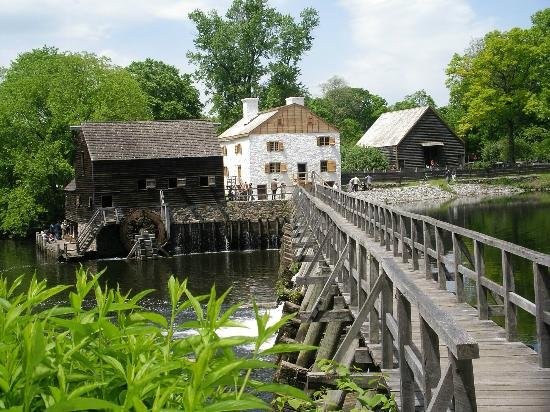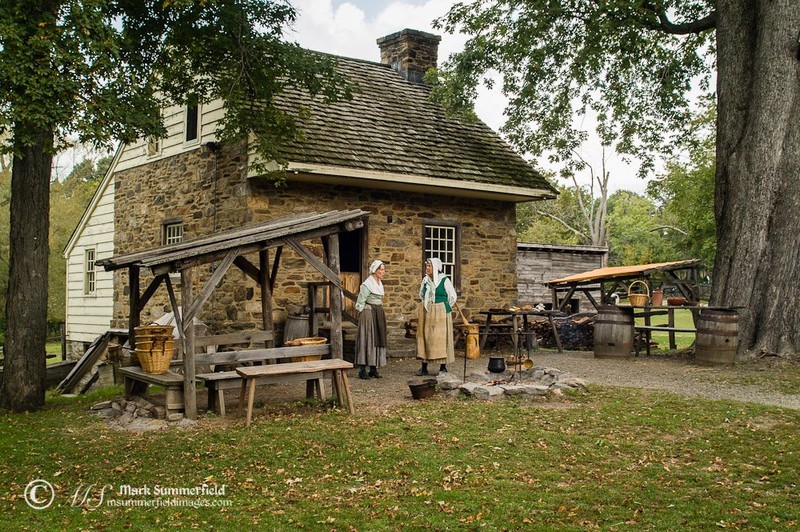Philipsburg Manor
Introduction
Text-to-speech Audio
Images
Philipsburg Manor

Manor house

Re-enactors at Philipsburg

Backstory and Context
Text-to-speech Audio
Philipsburg Manor or Upper Mills was the commercial center of the Philipse family's land holdings in New York, which were granted to them by royal charter in 1693.
Adolph Philipse inherited the Upper Mills from his father Frederick in 1702 and connected this plantation enterprise to the family's vast trade network in the West Indies and Africa. The Manor relied on enslaved Africans to run the complex and at one point 23 were employed on site. By the mid-eighteenth century, the Philipse family was one of the wealthiest and largest slave owners in the Northern colonies.
A variety of goods were grown on the land and processed at the Upper Mills. Tenant farmers also brought their crops to the mill. From an office in New York, Adolph would handle the shipment of the goods, which were primarily dairy products and grains such as wheat and rye. The water-powered gristmill, powered by the Pocantico River, produced 5,000 pounds of flour a day on average. Upon reaching New York City, it would be packaged and shipped overseas, where it would be traded for such goods as tobacco and sugar.
When the American Revolution broke out, the Philipse family took the side of the British. This resulted in their land’s confiscation in 1779 and subsequent departure from America in 1783. Following this, the property was auctioned to raise funds for the Colonial cause. The Beekman family would end up purchasing the biggest chunk of this newly forfeited land.
The house saw various owners in the 19th century. The last private owner was a Broadway star, Elsie Janis. In 1940. John D. Rockefeller bought what was then called Philipse Castle, restored it to its eighteenth century appearance and opened it to the public as a historic site in 1943.
The site became a National Historic Landmark on November 5, 1961. In 2004, it would become of the locations on the African American Heritage Trail of Westchester County.
Today, Philipsburg Manor includes a gristmill, manor house, barn and wharf. The grounds include traditional farm equipment and a slave garden where "traditional crops and medicinal herbs are grown." Tour guides in period costume give visitors an authentic experience of life at Philipsburg Manor prior to the Revolutionary war.
Sources
Brawarsky, Sandee. https://www.nytimes.com/2003/01/19/nyregion/plantation-on-the-hudson.html, New York Times. January 19th 2003. Accessed February 5th 2020. https://www.nytimes.com/2003/01/19/nyregion/plantation-on-the-hudson.html.
African American Heritage Trail, westchestergov.com. Accessed February 5th 2020. https://africanamerican.westchestergov.com/images/stories/pdfs/Heritagetrailbrochure.pdf.
Williams, Gray. Picturing Our Past. Elmsford, New York. Westchester County Historical Society, 2003.
Parks.ny.gov. Accessed February 5th 2020. https://parks.ny.gov/historic-sites/37/details.aspx.
Vetare, Margaret L. Philipsburg Manor Upper Mills. Historic Hudson Valley Press, 2004.
Accessed February 19th 2020. hudsonvalley.org.
